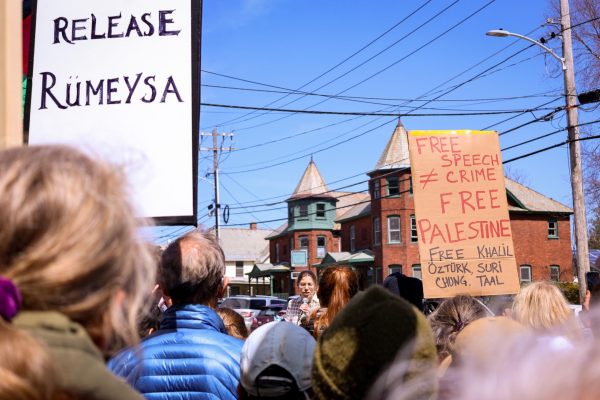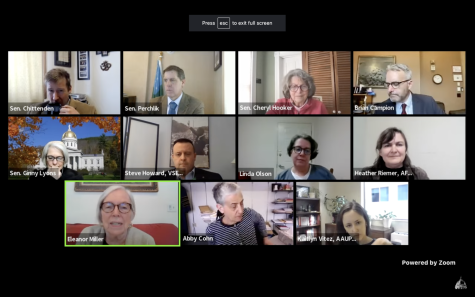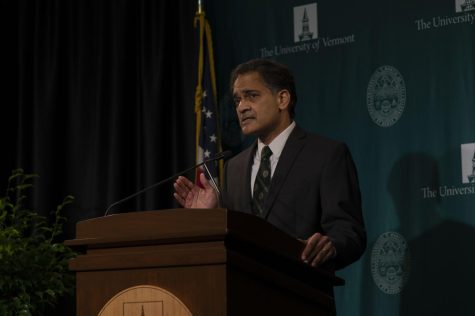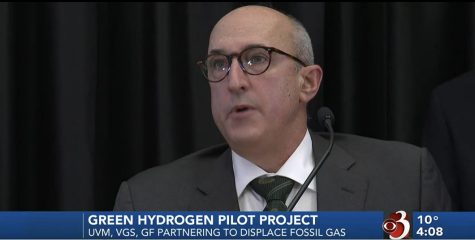UVM Medical Center joins effort to lower opiate abuse
In a new initiative to reduce opiate usage, the Burlington Police Department is working with the UVM Medical Center and Mayor Miro Weinberger.
All three parties will be working together to increase treatment for opiate users and decrease the amount of crime related to opiate use, according to a Jan. 11 press release from the mayor’s office.
The opiate reduction initiative was created to counter the effects of high drug use in Burlington through prevention, treatment and research, said Stephen Leffler, chief medical officer at the UVM Medical Center.
“We’re working to make sure that what we’re prescribing to patients is appropriate for their condition, that we’re not giving people too much medication or not enough,” Leffler said.
By increasing the amount of treatment available to users, the Medical Center has been able to reduce the number of people on the treatment waitlist by almost a third, he said.
Working together with the BPD is vital to solving the opiate problem, he said.
“The opiate crisis is more than a medical problem, it’s more than a social problem and it’s more than an issue of crime,” Leffler said. “They are all co-dependent on each other, so we have to come together as a community and each work on our piece of it collaboratively.”
Burlington Police Chief Brandon del Pozo agreed with the effectiveness of collabora- tion.
“If we combine our efforts and act in a data-driven way, we’ll be able to maximize our effect,” del Pozo said.
Del Pozo also highlighted opiate abuse as not just a health issue.
“It has to be this holistic approach, the idea behind it is that we’re all seeing this; it’s a public health crisis with a law enforcement component,” he said.
Approximately 9.1 percent of Vermonters age 18 to 25 years old reported abusing prescription pain relievers in 2013, down from 13.3 percent in 2010, according to a July 2015 opioid abuse report by the Vermont Department of Health.
Weinberger joined del Pozo in a presentation to the Burlington community on the opi- ate reduction initiative Jan. 11, according to the Jan. 11 press release.
“Through sustained commitment to on-the-ground community policing and better coordination among all law enforcement and public health agencies engaged in addressing opiate abuse, we will turn back this trend,” Weinberger said.
Burlington’s problem with opiates stems from a statewide over-prescription and abuse of opiate pain medication, del Pozo said.
Seventy-five percent of heroin addicts in the U.S. used prescription opiates before turning to heroin, according to the Center for Disease Control and Prevention.
In Burlington, the transition from prescription pills to injected heroin is increasing as the drug is imported in from larger cities like New York, where it is much cheaper, del Pozo said.
Crime in Burlington reflects rising rates of opiate usage, he said.
“A lot of the crimes we see, from robberies to retail theft to property crime, are motivated by people either trying to commit crimes to finance their drug habits or disputes between dealers over drugs,” del Pozo said.
In turn, some UVM students have said they felt unsafe knowing that many Burlington residents are actively using heroin in their community.
“Sometimes I feel uncomfortable walking around Burlington, especially at night, because I know there’s such a large amount of people doing heroin,” junior Emily Friend said. “Hearing about people getting murdered or robbed over drugs where I live is really upsetting to hear, and it seems to happen often.”










